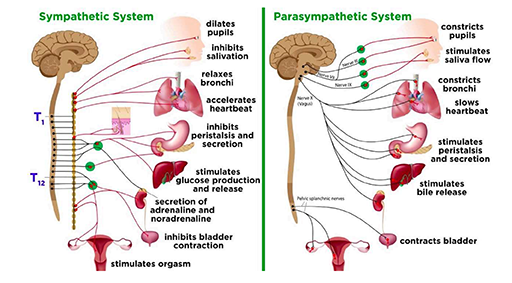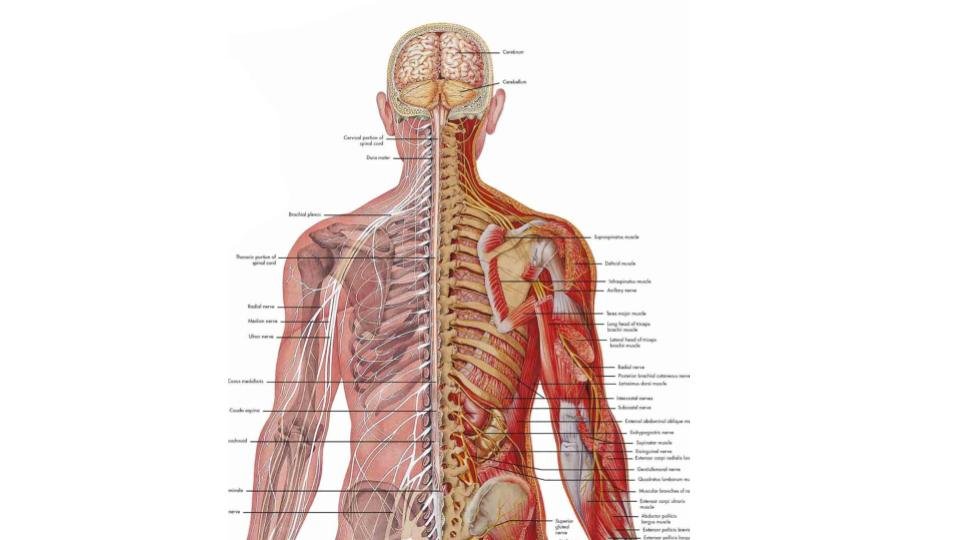The Role of the Sympathetic and Parasympathetic Nervous Systems
In the urban landscape of South Central Los Angeles, children face a myriad of challenges ranging from exposure to drugs and guns to living in environments characterized by poor nutrition and socioeconomic disparities. Amidst these adversities, the nervous system plays a pivotal role in shaping a child’s physiological and psychological responses. This article explores the intricate workings of the sympathetic and parasympathetic nervous systems and their implications for the developmental journey of children growing up in South Central Los Angeles.
Understanding the Nervous System: The nervous system serves as the body’s command center, regulating various bodily functions and responses to internal and external stimuli. At its core are two main branches: the sympathetic nervous system and the parasympathetic nervous system, collectively known as the autonomic nervous system.
Sympathetic Nervous System: The sympathetic nervous system is often referred to as the “fight-or-flight” system, as it mobilizes the body’s resources in response to stressors or threats. When activated, it triggers physiological changes such as increased heart rate, dilation of airways, and release of stress hormones like cortisol and adrenaline. In the context of South Central Los Angeles, where exposure to violence and danger is prevalent, children may experience heightened sympathetic arousal, leading to hypervigilance, anxiety, and a persistent state of stress.
Parasympathetic Nervous System: In contrast, the parasympathetic nervous system acts as the body’s “rest-and-digest” mechanism, promoting relaxation, digestion, and restoration. It counterbalances the effects of the sympathetic nervous system, helping to regulate heart rate, promote digestion, and conserve energy. However, in environments marked by chronic stress and adversity, such as those found in South Central Los Angeles, the parasympathetic nervous system may struggle to function optimally, leading to difficulties in emotional regulation, sleep disturbances, and impaired immune function.
Impact on Childhood Development: The interplay between the sympathetic and parasympathetic nervous systems profoundly influences a child’s developmental trajectory, especially in high-risk environments like South Central Los Angeles. Persistent activation of the sympathetic nervous system can have detrimental effects on physical health, contributing to conditions such as hypertension, obesity, and cardiovascular disease. Moreover, chronic stress during critical periods of development can alter brain architecture and disrupt neurodevelopmental processes, predisposing children to mental health disorders and cognitive impairments.
Navigating Childhood Development in South Central Los Angeles: Understanding the Role of the Sympathetic and Parasympathetic Nervous Systems
In addition to its physiological effects, dysregulation of the autonomic nervous system can also impact socioemotional development and behavior. Children exposed to chronic stressors may exhibit symptoms of anxiety, aggression, and difficulty with impulse control, making it challenging to navigate social interactions and academic environments. Furthermore, the effects of toxic stress on the developing brain can perpetuate cycles of poverty and inequality, hindering opportunities for upward mobility and socioeconomic advancement.
Addressing the Challenges: Recognizing the impact of the sympathetic and parasympathetic nervous systems on childhood development is crucial for designing targeted interventions that support resilience and well-being in children growing up in South Central Los Angeles. Trauma-informed approaches that prioritize safety, stability, and nurturing relationships can help mitigate the effects of chronic stress and promote healing. Additionally, access to comprehensive healthcare services, mental health support, and community resources is essential for addressing the underlying social determinants of health and fostering holistic development.
Brain Nervous System: The brain’s nervous system comprises a vast network of neurons and neurotransmitters that facilitate communication between different regions of the brain and the rest of the body. It regulates essential functions such as cognition, emotion, movement, and autonomic responses. Understanding the intricacies of the brain’s nervous system is critical for unraveling the complexities of childhood development and devising effective interventions to support vulnerable populations.
In the face of daunting challenges, children growing up in South Central Los Angeles demonstrate remarkable resilience and potential. By understanding the role of the sympathetic and parasympathetic nervous systems in shaping their developmental journey, we can empower communities to create environments that nurture health, well-being, and opportunity for all children, regardless of their circumstances. Through targeted interventions, advocacy, and collaboration, we can build a brighter future where every child has the chance to thrive and succeed.
